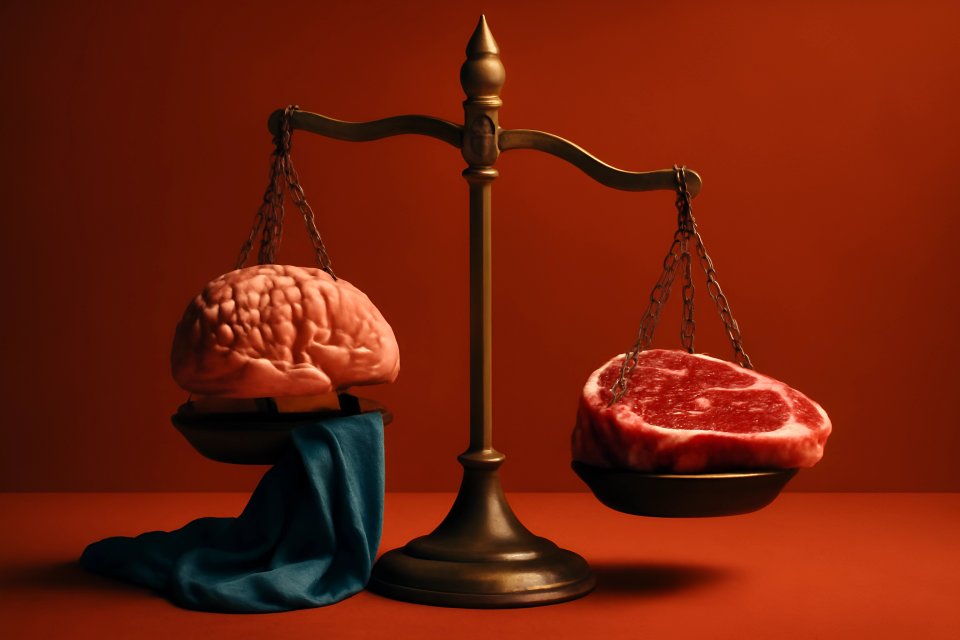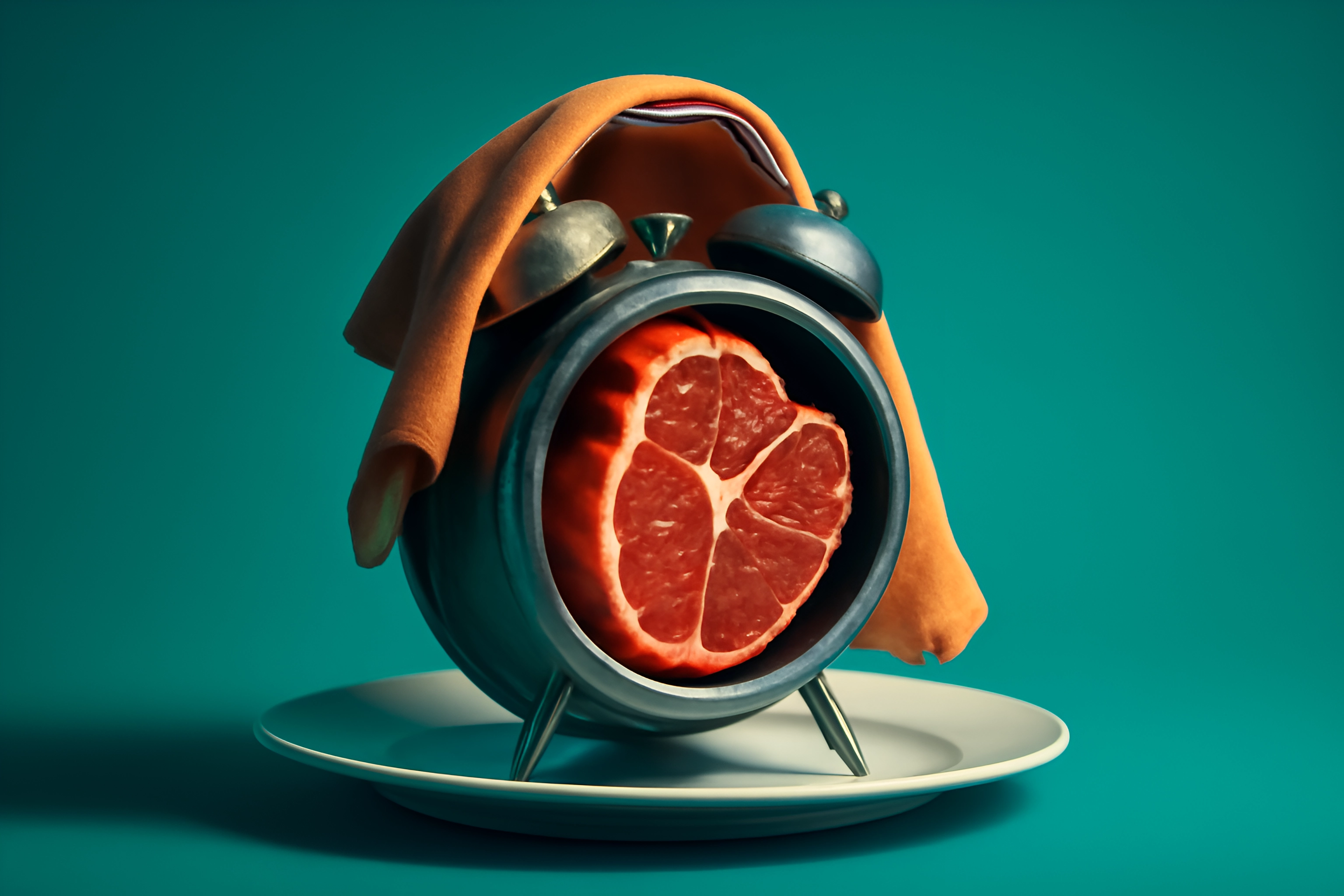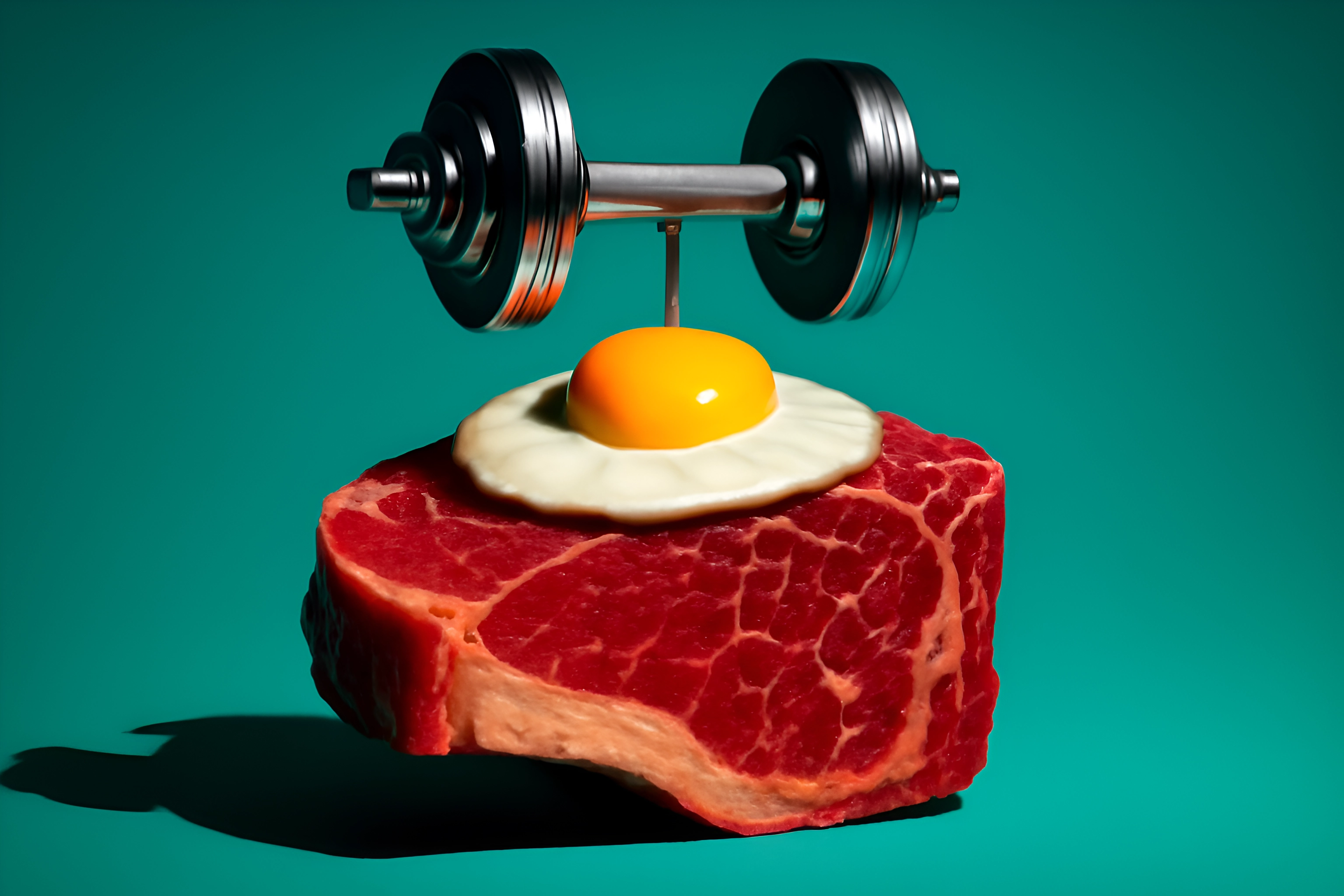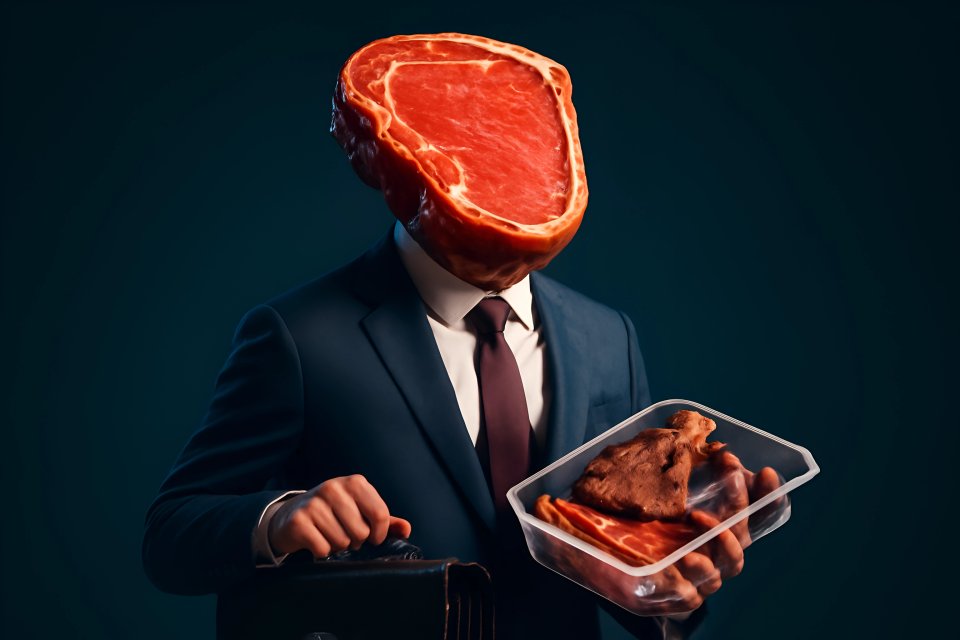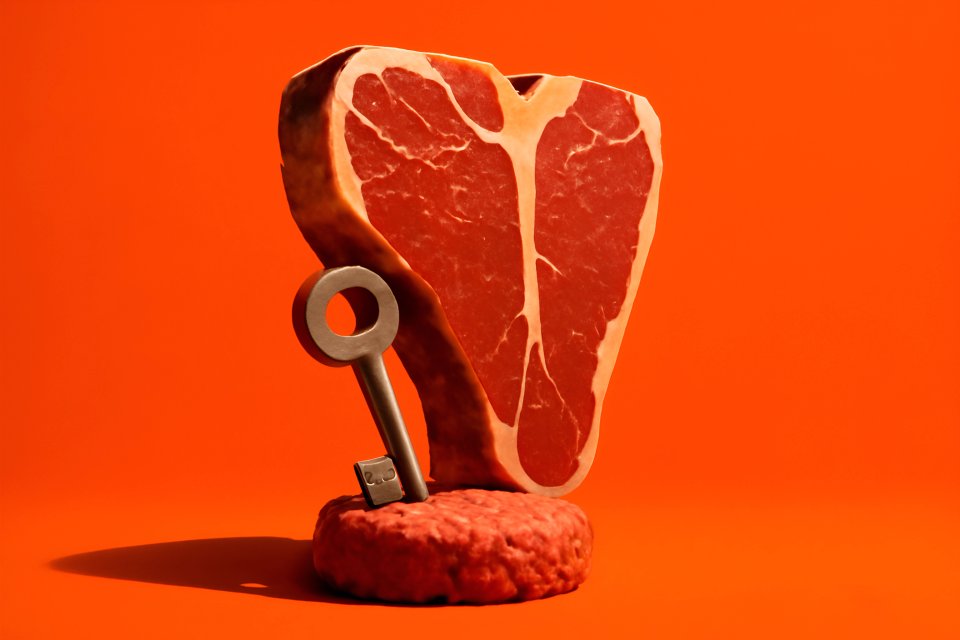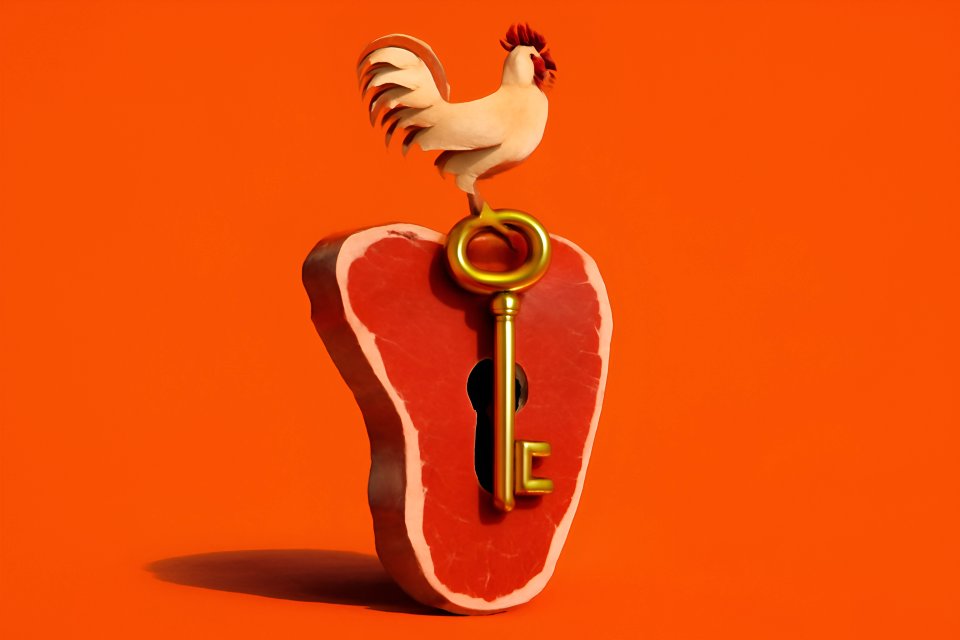
You’ve done it. You’ve committed to the carnivore diet, a radical act of self-preservation in a world of confusing nutritional advice. You’re ready to heal. But as you stand in the meat aisle, a new battle begins. On one side, the familiar, affordable conventional beef. On the other, the premium, grass-fed cuts, their labels promising a world of superior health. Does that "grass-fed" label really make a difference for your healing, or is it just a clever way to drain your wallet?
The debate is fierce, fueled by passionate advocates on both sides. When your budget is tight but your desire for deep healing is non-negotiable, the stakes feel impossibly high. You need to know if this choice is a critical investment in your survival and well-being or an unnecessary luxury.
Forget the noise and the marketing hype. This guide will cut straight to the truth. We will scientifically break down the real-world differences between grass-fed and conventional meat, focusing laser-like on the factors that matter most for your healing journey: nutrient density, inflammation, and toxin load. By the end, you will have the absolute clarity to make the best, most powerful choice for your health, your goals, and your budget.
First, Let's Define Our Terms: What’s Really on Your Plate?
Before we can declare a winner, we must understand the contenders. The terms thrown around in the meat industry can be intentionally confusing. Let's establish a clear foundation so you know exactly what you're putting in your body.
What is Conventional (Grain-Fed) Meat?
This is the meat that dominates supermarket shelves. It comes from cattle raised in the standard industrial model, often in Concentrated Animal Feeding Operations, or CAFOs. These animals are typically finished on a diet that is unnatural to them, composed primarily of grains like corn and soy.
This grain-based diet is designed to fatten the cattle quickly and create the marbled texture many consumers expect. To prevent the spread of disease in crowded conditions and accelerate growth, the prophylactic use of antibiotics and the administration of growth hormones are common practices. This is the factory model of meat production, optimized for efficiency and cost, not necessarily for the animal's health or the nutrient quality of the final product.
What is Grass-Fed & Grass-Finished Meat?
This is the ancestral model of raising cattle. These animals spend their entire lives grazing on pasture, eating the grass and forage their digestive systems were designed for. This is a crucial distinction, as some meat labeled "grass-fed" may come from cattle that were later moved to a feedlot and "finished" on grain.
For maximum healing potential, you must look for meat that is both grass-fed and grass-finished. This is the gold standard. These animals live in a more natural, lower-stress environment, which not only has ethical implications but also profoundly impacts the nutritional quality of their meat.
Where Does "Organic" Fit In?
"Organic" is another layer to consider, and it's a separate certification from how the animal was fed. An organic label guarantees that the animal was not given antibiotics or growth hormones and that its feed—whether grass or grain—was grown without synthetic pesticides or GMOs.
An animal can be organic but still be grain-fed in a feedlot. Therefore, the absolute ideal for someone on a healing journey is meat that is grass-fed, grass-finished, and organic. This ensures the animal ate its natural diet and that the diet was free from modern agricultural chemicals.
The Nutritional Showdown: How Grass-Fed and Conventional Meat Compare for Healing
Now we get to the heart of the matter. Does the diet of the cow truly change the meat on your plate in a way that impacts your health? The scientific answer is a resounding yes.
The Fatty Acid Factor: Taming Inflammation with Omega-3s
For anyone using the carnivore diet to fight chronic illness, the fatty acid profile of your meat is paramount. Your body needs a healthy balance of Omega-6 and Omega-3 fatty acids; an imbalance in favor of Omega-6 is a primary driver of systemic inflammation. According to a peer-reviewed study in the National Institutes of Health, grain-fed beef has a less favorable fatty acid profile that can contribute to this inflammatory state.
This is where grass-fed beef delivers a knockout blow. Because of their grass-based diet, these animals produce meat that contains up to 5 times more anti-inflammatory Omega-3s than their grain-fed counterparts. This dramatically improves the Omega-6 to Omega-3 ratio, shifting it from a pro-inflammatory state to an anti-inflammatory one that supports your body's healing mechanisms. For those looking to alleviate arthritis and joint pain naturally, this single factor can be a game-changer.
A Boost in Vitamins and Antioxidants
The nutritional superiority of grass-fed meat extends to its vitamin and antioxidant content. It is significantly higher in precursors for Vitamin A and Vitamin E, fat-soluble vitamins that are critical for robust immune function, vision, and skin health. If you're seeking to improve your skin health on the carnivore diet, the higher vitamin content in grass-fed meat provides a powerful advantage.
Furthermore, grass-fed meat contains higher levels of the body's master antioxidants, such as glutathione and superoxide dismutase. Research from UnderstandingAg highlights that grass-fed beef also contains beneficial plant phytonutrients from the pasture, which have been shown to improve gut microbial diversity and reduce inflammation. These compounds help your body combat oxidative stress, which is the cellular damage at the root of aging and chronic disease.
The CLA Advantage
Conjugated Linoleic Acid, or CLA, is a unique and powerful type of fat found in the meat and dairy of ruminant animals. Research suggests it has potent anti-cancer properties, can aid in fat loss, and supports a healthy immune system. This is another area where grass-fed shines.
According to STAT Wellness, grass-fed beef contains 300-500% more CLA than grain-fed beef. This isn't a minor difference; it's a massive nutritional upgrade. By choosing grass-fed, you are actively supplying your body with a compound that is directly linked to disease prevention and improved metabolic health.
Micronutrient Density: Are They Really Different?
Let's be clear: both conventional and grass-fed beef are phenomenal sources of highly bioavailable nutrients like iron, zinc, and B12. You will get these essential minerals regardless of your choice. This is a core reason why the carnivore diet is so effective for reversing nutrient deficiencies.
However, the story doesn't end there. The overall nutrient synergy in grass-fed meat is superior. This is because the vitality of the food is a direct reflection of the health of the animal it came from, a principle we'll explore next.
Beyond the Nutrients: The Hidden Factors in Carnivore Meat Quality
The nutritional panel tells part of the story, but deeper factors are at play. For true healing, we must look beyond the numbers and consider the energetic and biological quality of our food.
The Principle of "You Are What Your Eat Ate"
This is an ancient truth that modern science is only beginning to fully appreciate. A sick, stressed animal, fed an inflammatory and unnatural diet, simply cannot provide the same level of life-giving vitality as a healthy animal that lived in accordance with its nature. Food is information, and the information contained in meat from a CAFO is one of stress and sickness.
When you use food as medicine, this principle becomes non-negotiable. You are seeking to rebuild your body at a cellular level. Providing it with meat from a thriving, properly raised animal gives your body the highest quality building blocks to work with, accelerating your path to wellness.
Toxin Load: Hormones, Antibiotics, and Pesticides
This is a critical factor for anyone with a compromised or sensitive system. Conventional meat production relies on tools that can leave a residue in the final product. The potential for residual growth hormones, antibiotics, and pesticides (from the chemically-treated grain feed) to be stored in the animal's fat is a real concern.
For a body already burdened by chronic illness, this added toxic load can hinder healing by taxing your detoxification systems. Grass-fed and organic meat offers a much cleaner profile. By being free from the routine use of these compounds, it reduces the burden on your body, freeing up precious energy to focus on repair and regeneration. This aligns with the foundational goal of removing plant-based irritants and other dietary toxins to allow the body to heal.
The Pragmatist's Guide: Making the Best Choice for Your Budget and Goals
So, grass-fed is nutritionally superior. But we live in the real world, where budgets matter. Let's move from the ideal to the practical, creating a clear, actionable plan that works for you.
The "Good, Better, Best" Framework for the Carnivore Diet
Don't let perfection become the enemy of progress. Any version of the carnivore diet is a monumental step up from the standard modern diet. Here’s how to approach your choice:
- GOOD: Conventional Meat. If your budget only allows for conventional meat, do not despair. You will still reap incredible benefits by eliminating inflammatory plants, seed oils, and sugar. Pro-Tip: Choose leaner cuts of conventional meat and consider draining and rinsing ground beef after cooking to minimize your exposure to the less desirable fats and potential toxins stored within them.
- BETTER: A Hybrid Approach. This is the sweet spot for many people. Prioritize your spending where it has the most impact. Buy grass-fed for the fattiest cuts, like ribeyes and 80/20 ground beef, where the superior fatty acid profile is most concentrated. You can then use more affordable conventional meat for leaner cuts like roasts or sirloin.
- BEST: 100% Grass-Fed, Grass-Finished. This is the optimal choice for anyone battling a severe chronic illness, stubborn inflammation, or who simply wants to maximize the healing potential of the diet from day one. If you are pursuing advanced strategies for managing autoimmune symptoms, making this investment is a powerful move.
How to Source High-Quality Meat Without Breaking the Bank
Choosing the "best" option doesn't have to be financially ruinous. With a little strategy, you can make high-quality meat surprisingly affordable.
Look into buying in bulk by purchasing a quarter, half, or whole cow directly from a local farmer. This often drops the per-pound price dramatically. Keep an eye out for sales at your local grocery stores and stock up when prices are low. You can also explore online subscription services like ButcherBox, which deliver high-quality meat to your door. By adopting smart carnivore meal prep strategies, you can make every dollar and every pound of high-quality meat go further.
The Final Verdict: Is Grass-Fed a Necessity for Healing?
Let's bring it all home. We've seen that grass-fed, grass-finished beef offers a superior fatty acid profile for fighting inflammation, a higher content of crucial vitamins and antioxidants, and a lower load of potential toxins like hormones and antibiotics. These are not minor details; they are significant advantages in a healing protocol.
Here is the official HealingCarnivore stance: While you can absolutely achieve incredible healing with conventional meat, grass-fed meat provides an optimized, accelerated path to reducing inflammation and restoring vitality. It removes potential roadblocks and provides powerful nutritional advantages that can make a profound difference, especially in the early, critical stages of your journey. It's the difference between taking the direct highway to wellness versus a scenic route with more potential detours.
Start where you are. Choose the best quality meat you can consistently afford. The most important decision you've already made is choosing to reclaim your health with the carnivore diet. Every step you take towards better quality is a powerful investment in a future free from pain and full of vibrant, limitless energy.
Frequently Asked Questions (FAQ)
Q1: Is grass-fed beef really worth the extra cost on a carnivore diet?
A: For deep healing, yes. The powerful anti-inflammatory benefits from the improved fatty acid profile can justify the cost for anyone battling chronic illness. For general health and wellness, it's a fantastic upgrade but not strictly necessary if your budget is the primary constraint.
Q2: What's more important: buying grass-fed or organic meat?
A: For the specific goal of reducing inflammation, grass-fed is more important due to its superior Omega-3 content and CLA. The "organic" label ensures the feed was clean, but the "grass-fed" label ensures the feed was appropriate for the animal, which has a greater impact on the meat's fatty acid profile. If you can find and afford meat that is both grass-fed AND organic, you have found the best of both worlds.
Q3: Can I still reverse my autoimmune disease with conventional meat?
A: Many people have achieved incredible remission and healing using conventional meat. The primary benefit of the carnivore diet comes from the elimination of inflammatory plant-based foods. However, if you hit a healing plateau, switching to 100% grass-fed meat is often the key to breaking through and achieving a deeper level of recovery, as many inspiring healing stories demonstrate.
Q4: Does the "grass-fed vs conventional meat" debate apply to other animals like lamb or bison?
A: It does, but it's often a moot point. Animals like lamb, bison, and goat are almost always raised on pasture for their entire lives, even if they aren't explicitly labeled "grass-fed." This makes them excellent, reliable choices for sourcing high-quality, nutrient-dense meat with a naturally healthy fat profile.
